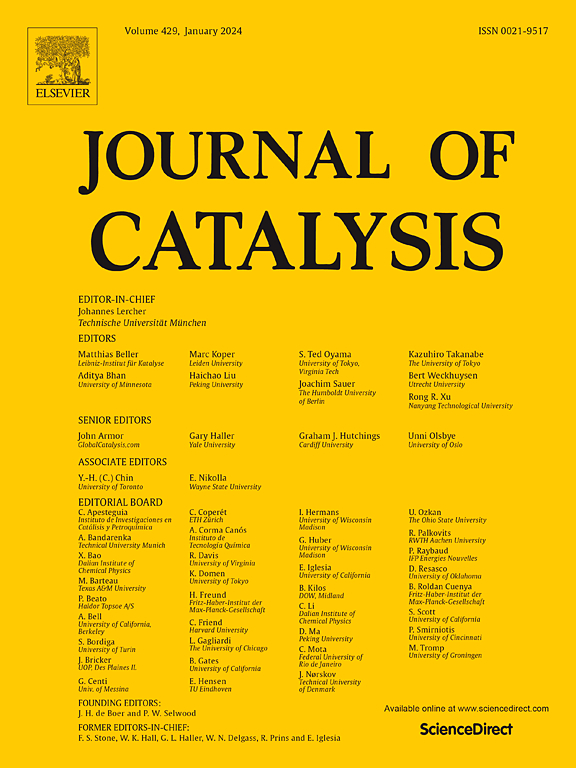The terphenyl phosphine TXPhos: A highly efficient and general supporting ligand for palladium-catalyzed C-N cross-coupling of aryl chlorides with diaryl amines as well
IF 6.5
1区 化学
Q2 CHEMISTRY, PHYSICAL
引用次数: 0
Abstract
An efficient C-N cross-coupling between readily available aryl chlorides and diaryl amines has been established by using Pd/TXPhos as catalyst, leading to a diversity of triarylamines in high yields. Detailed experimentation revealed that terphenyl phosphine ligand TXPhos exhibited premier catalytic performance in comparison with common ligands and the choice of base and solvent was crucial to reactivity. Strong bases, such as NaOtBu and LHMDS, were the preferred ones for electron-rich diarylamines, while bases including alkali metal carbonates and phosphates were the suitable choice for diarylamines possessing electron-withdrawing substituents. Notably, the use of TXPhos as supporting ligand enabled the extension to weak base such as NaOPh with electron-rich diarylamine substrates. Mechanistic studies indicated that a Pd phenolate species initially formed after the oxidative addition step when NaOPh was employed as the base, which would facilitate the generation of Pd-amide complex after amine coordination. The synthetic utility of this coupling protocol was exemplified by the efficient synthesis of several carbazole-based OLED molecules and the practicality was demonstrated by the achievement of up to 3300 TON.


terphenyl phosphine TXPhos是钯催化芳酰氯与二芳胺C-N交叉偶联的一种高效、通用的支撑配体
以Pd/TXPhos为催化剂,在易得的芳酰氯和二芳胺之间建立了高效的C-N交叉偶联反应,从而高产出多种三芳胺。详细的实验表明,与普通配体相比,terphenyl phospine配体TXPhos具有优越的催化性能,碱和溶剂的选择是影响反应活性的关键。强碱如NaOtBu和LHMDS是富电子二芳胺的首选碱,而碱金属碳酸盐和磷酸盐是具有吸电子取代基的二芳胺的合适碱。值得注意的是,使用TXPhos作为支撑配体可以扩展到弱碱如NaOPh与富电子二芳胺底物。机理研究表明,以NaOPh为碱时,在氧化加成过程中首先形成一个Pd酚类物质,这有利于胺配位后Pd-酰胺络合物的生成。该偶联方案的实用性通过几个咔唑基OLED分子的高效合成得到了验证,而高达3300 TON的实现也证明了其实用性。
本文章由计算机程序翻译,如有差异,请以英文原文为准。
求助全文
约1分钟内获得全文
求助全文
来源期刊

Journal of Catalysis
工程技术-工程:化工
CiteScore
12.30
自引率
5.50%
发文量
447
审稿时长
31 days
期刊介绍:
The Journal of Catalysis publishes scholarly articles on both heterogeneous and homogeneous catalysis, covering a wide range of chemical transformations. These include various types of catalysis, such as those mediated by photons, plasmons, and electrons. The focus of the studies is to understand the relationship between catalytic function and the underlying chemical properties of surfaces and metal complexes.
The articles in the journal offer innovative concepts and explore the synthesis and kinetics of inorganic solids and homogeneous complexes. Furthermore, they discuss spectroscopic techniques for characterizing catalysts, investigate the interaction of probes and reacting species with catalysts, and employ theoretical methods.
The research presented in the journal should have direct relevance to the field of catalytic processes, addressing either fundamental aspects or applications of catalysis.
 求助内容:
求助内容: 应助结果提醒方式:
应助结果提醒方式:


